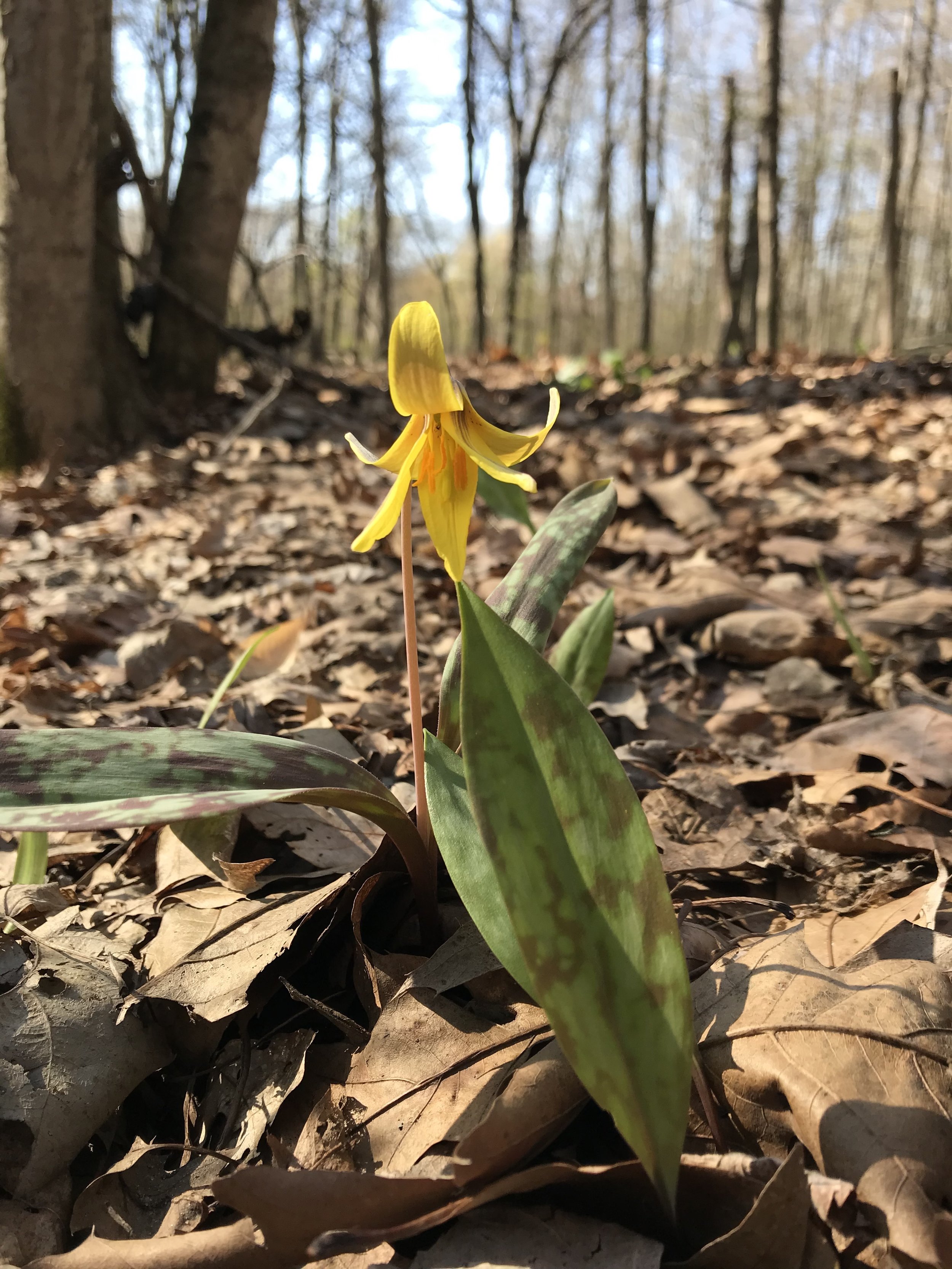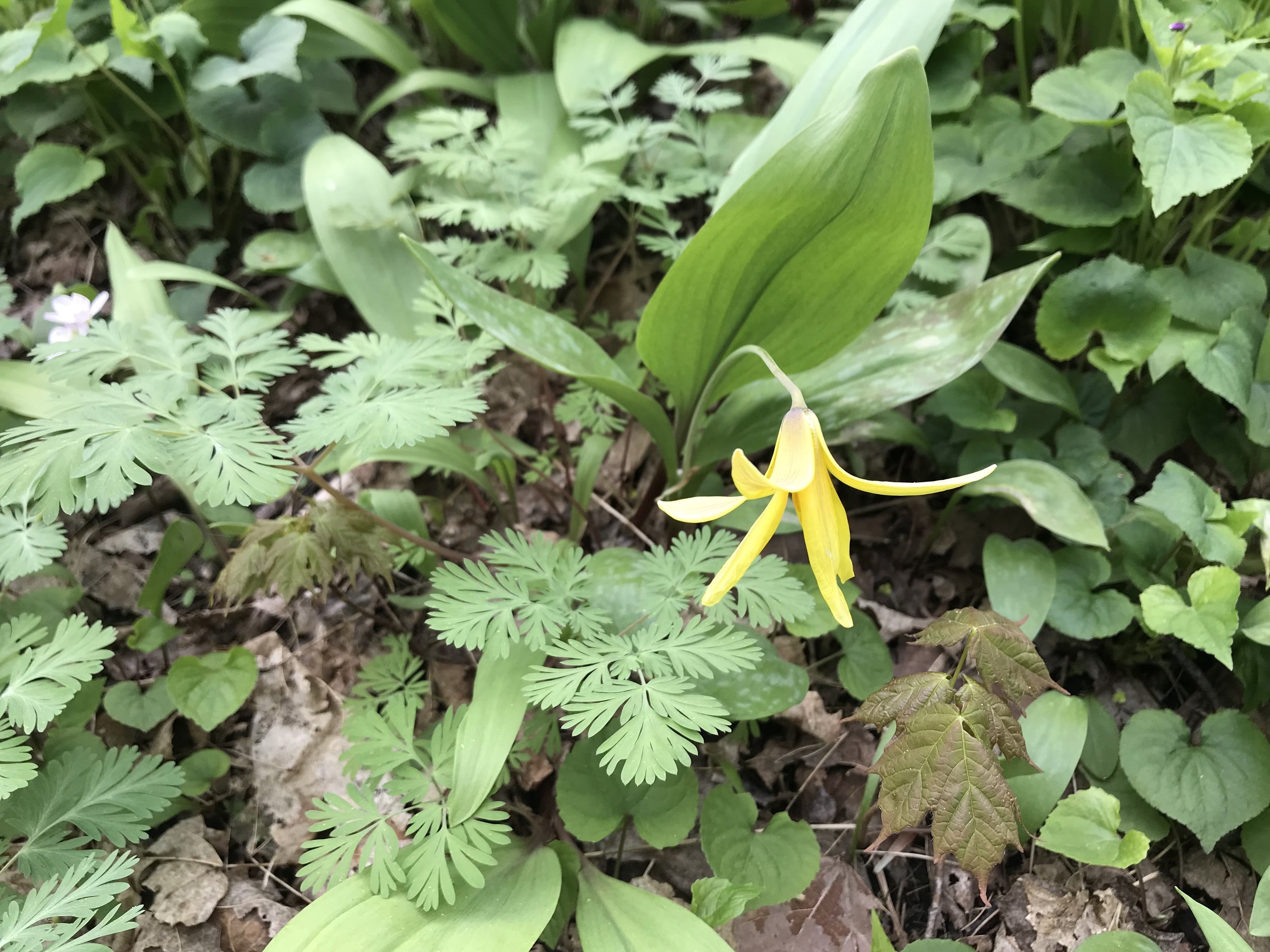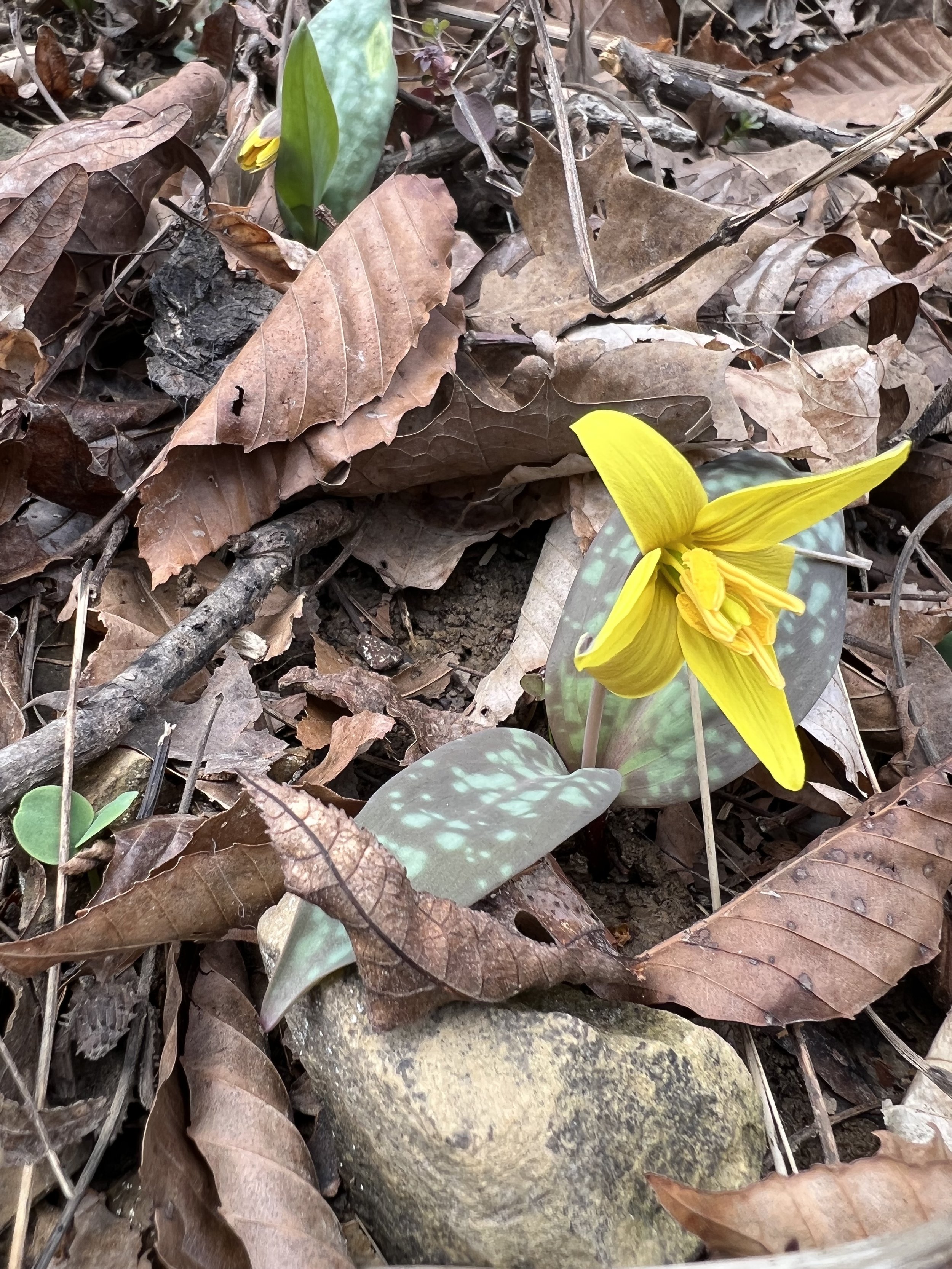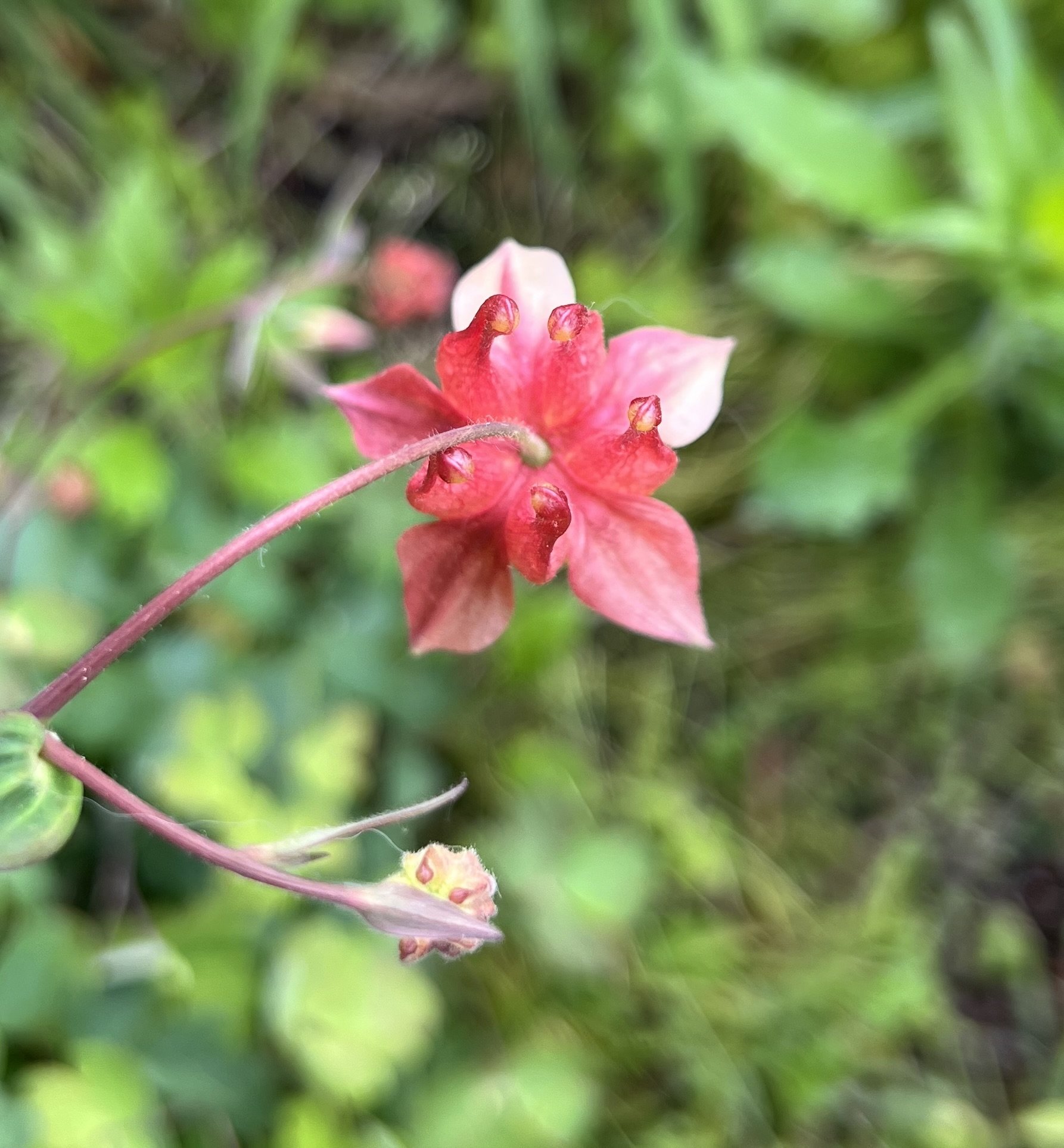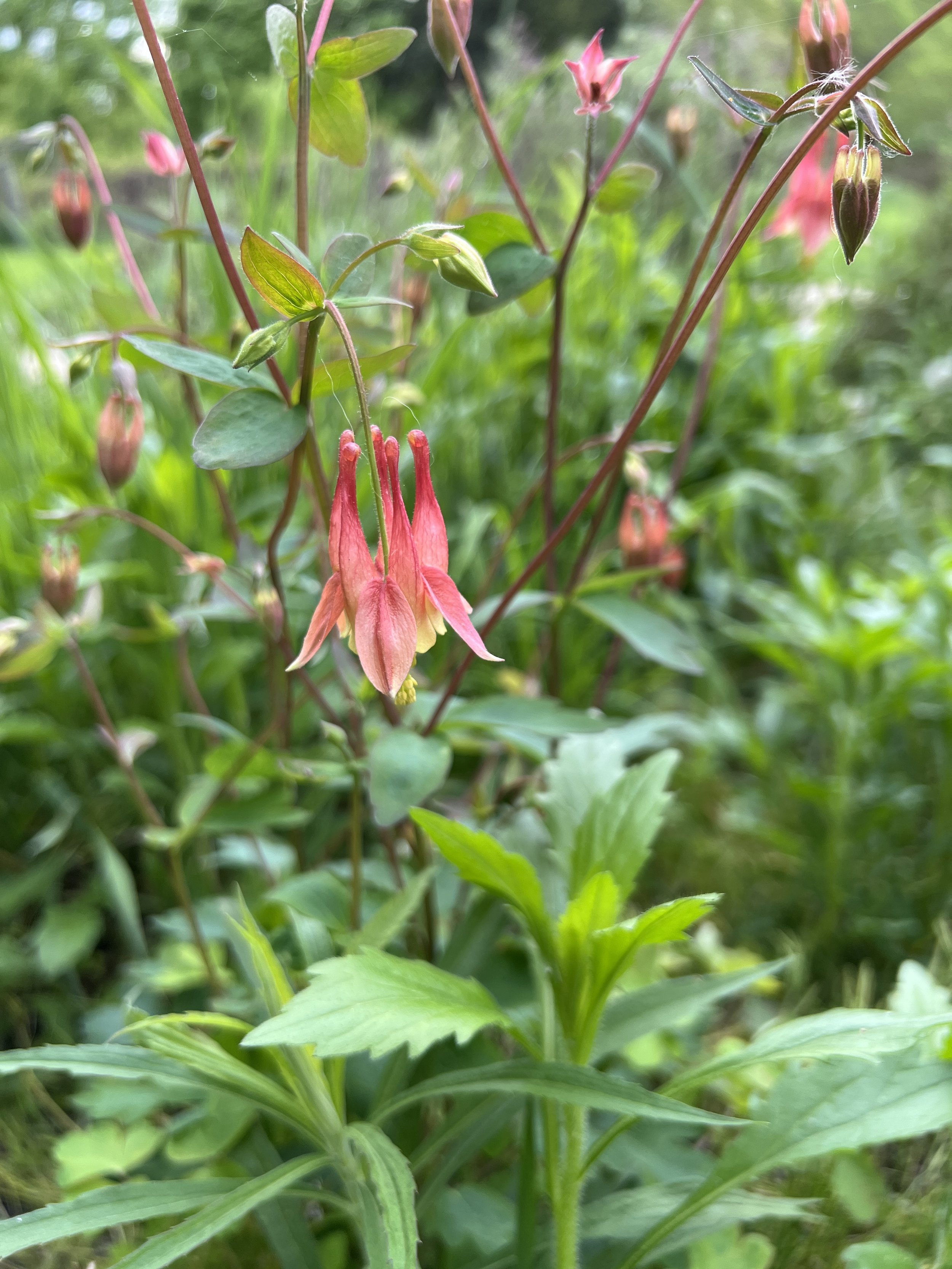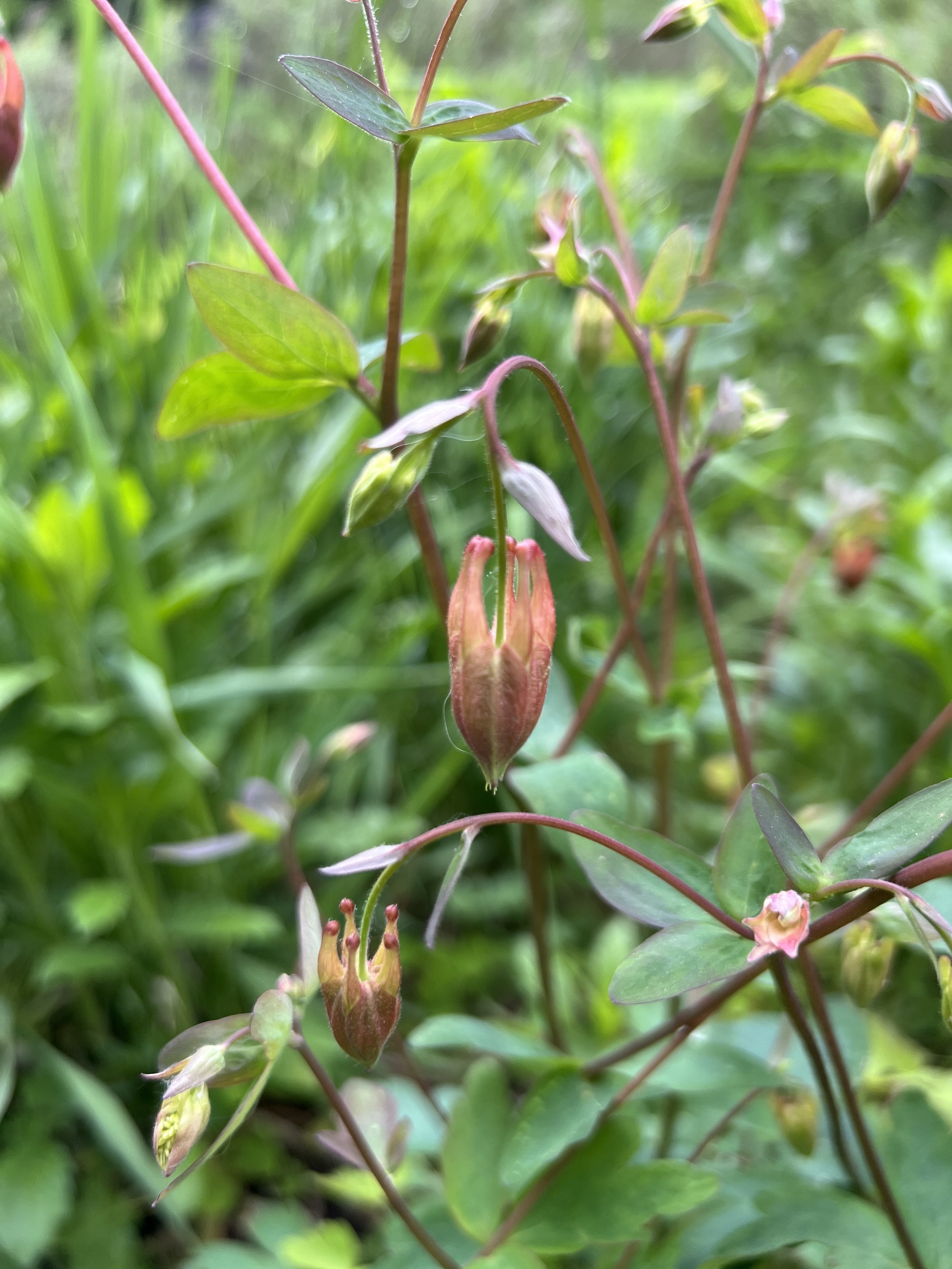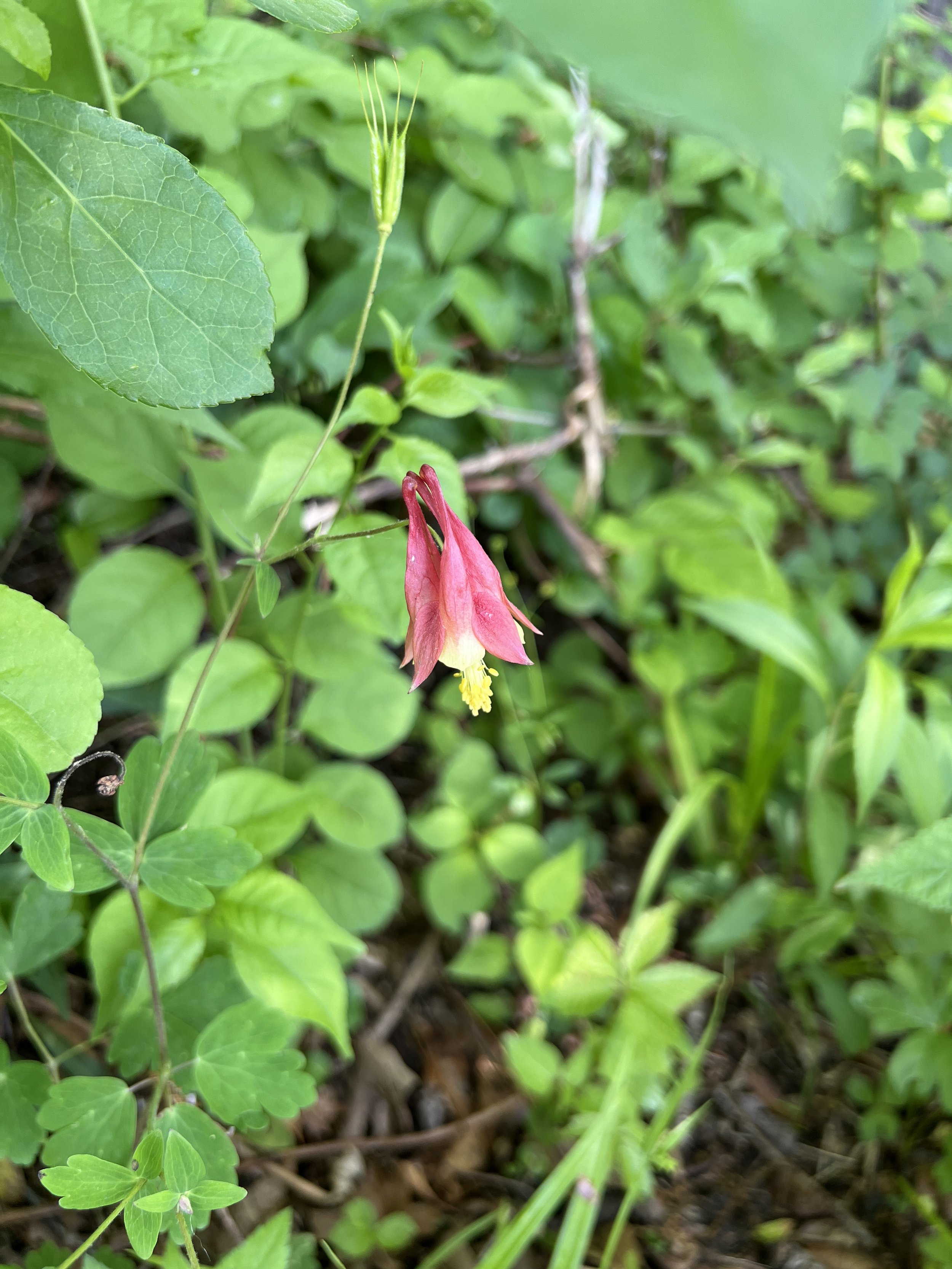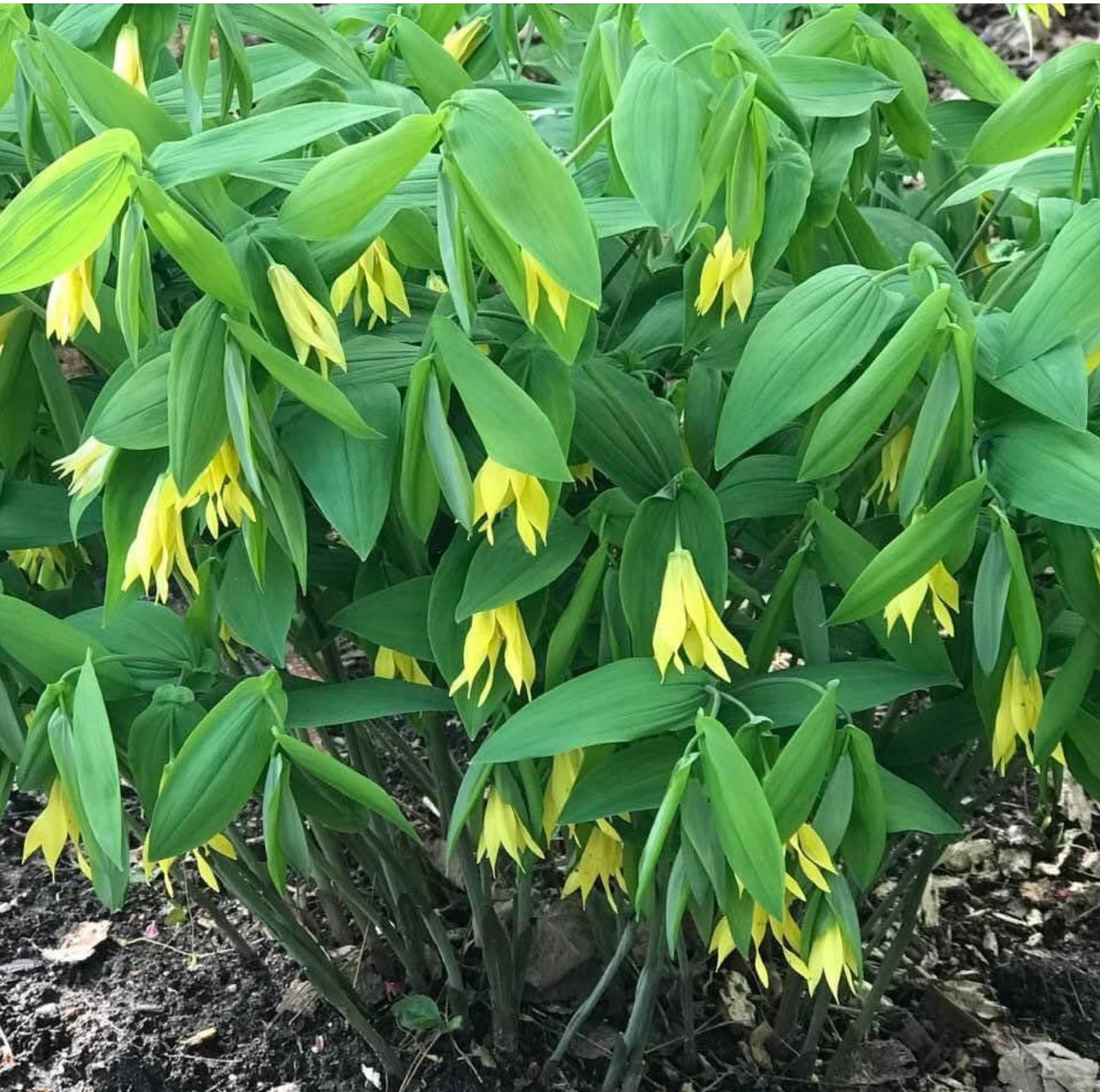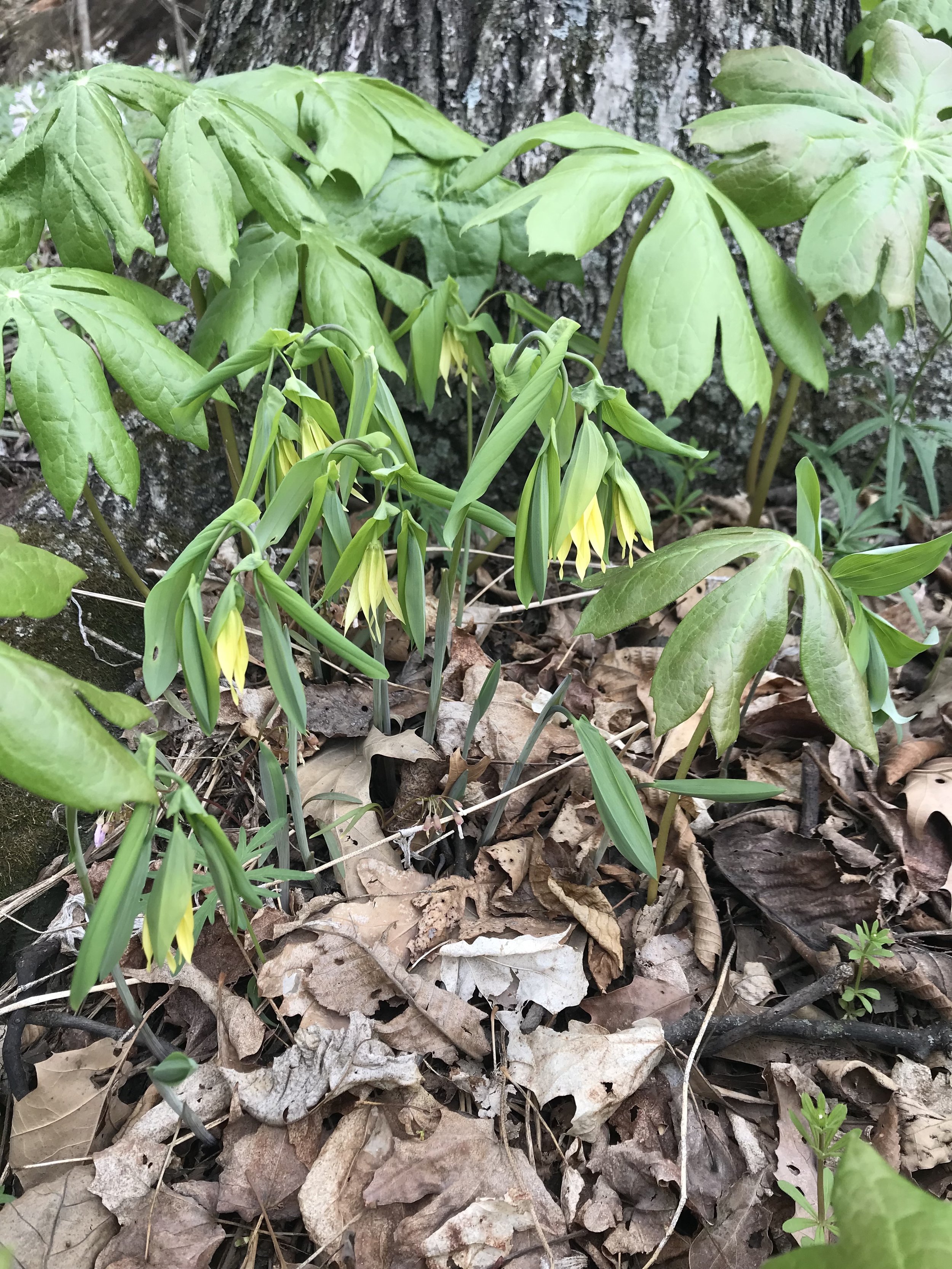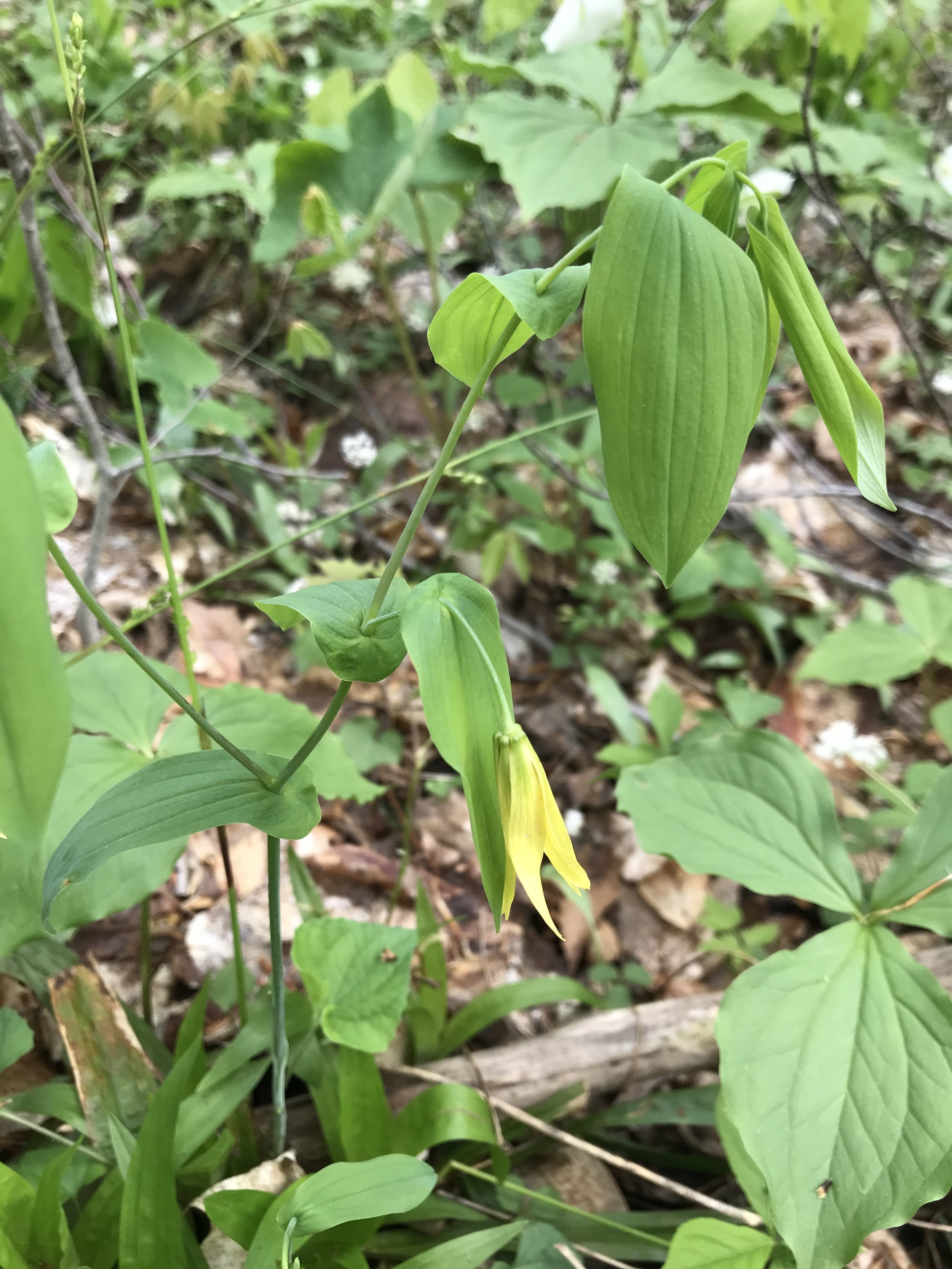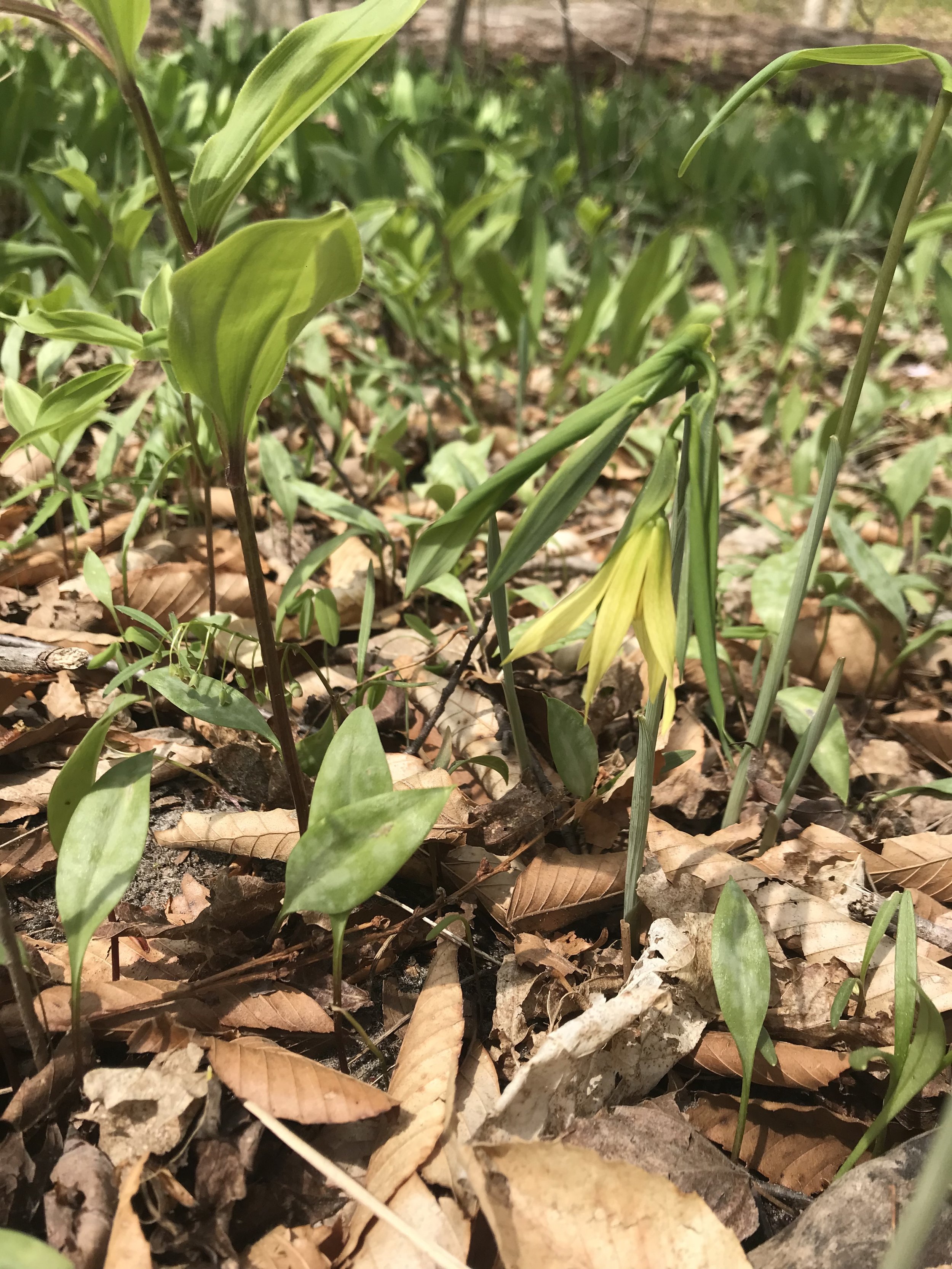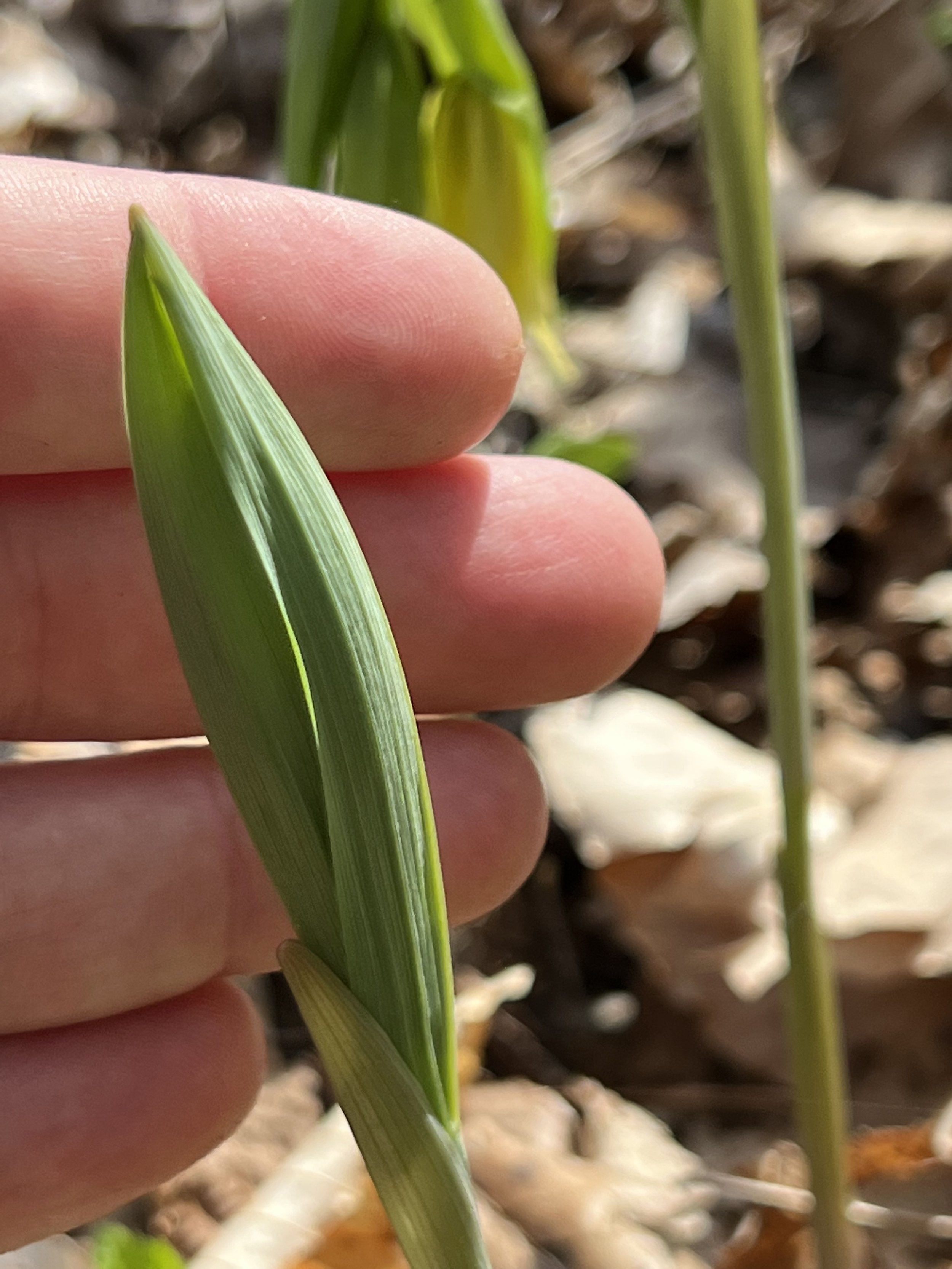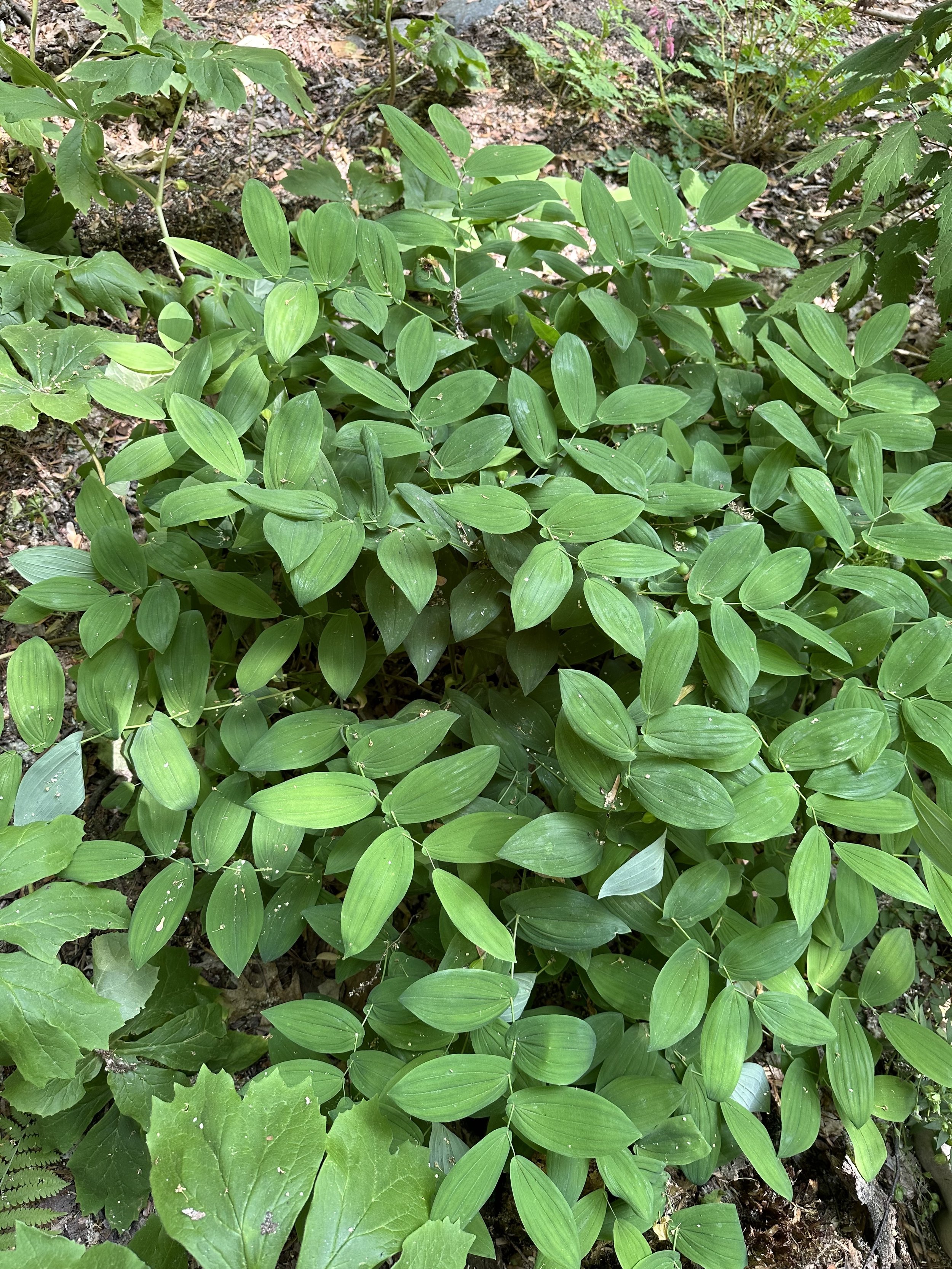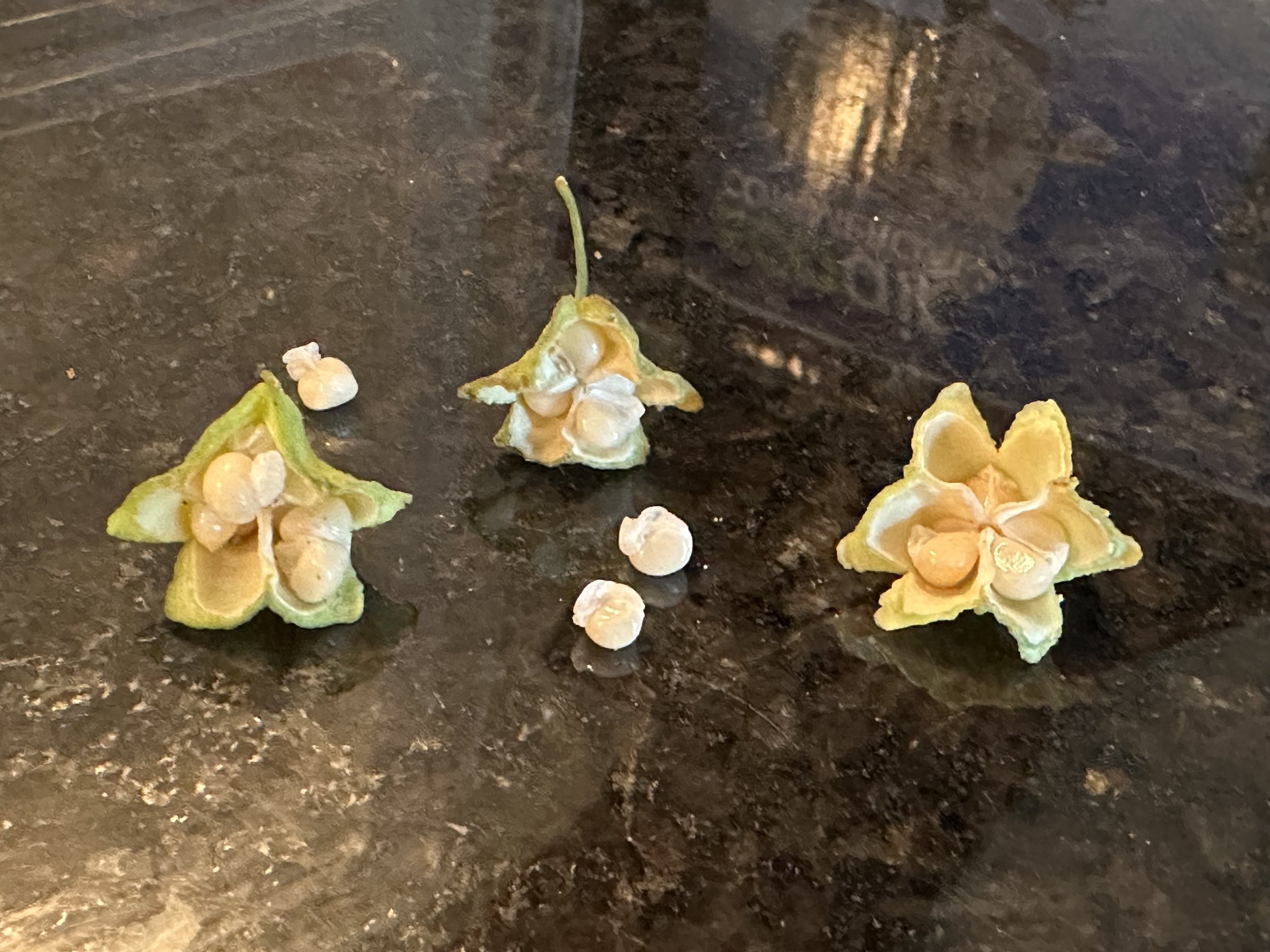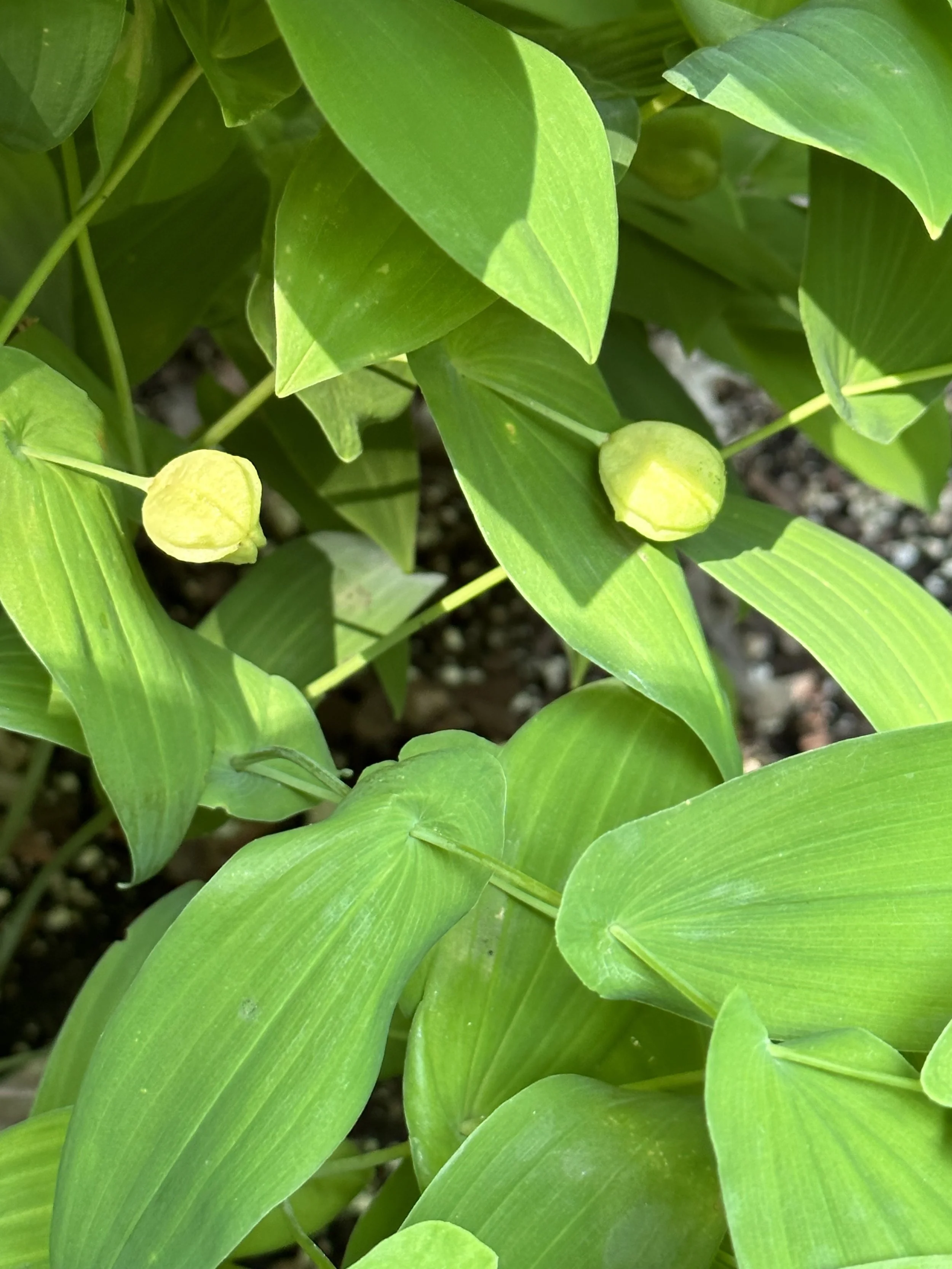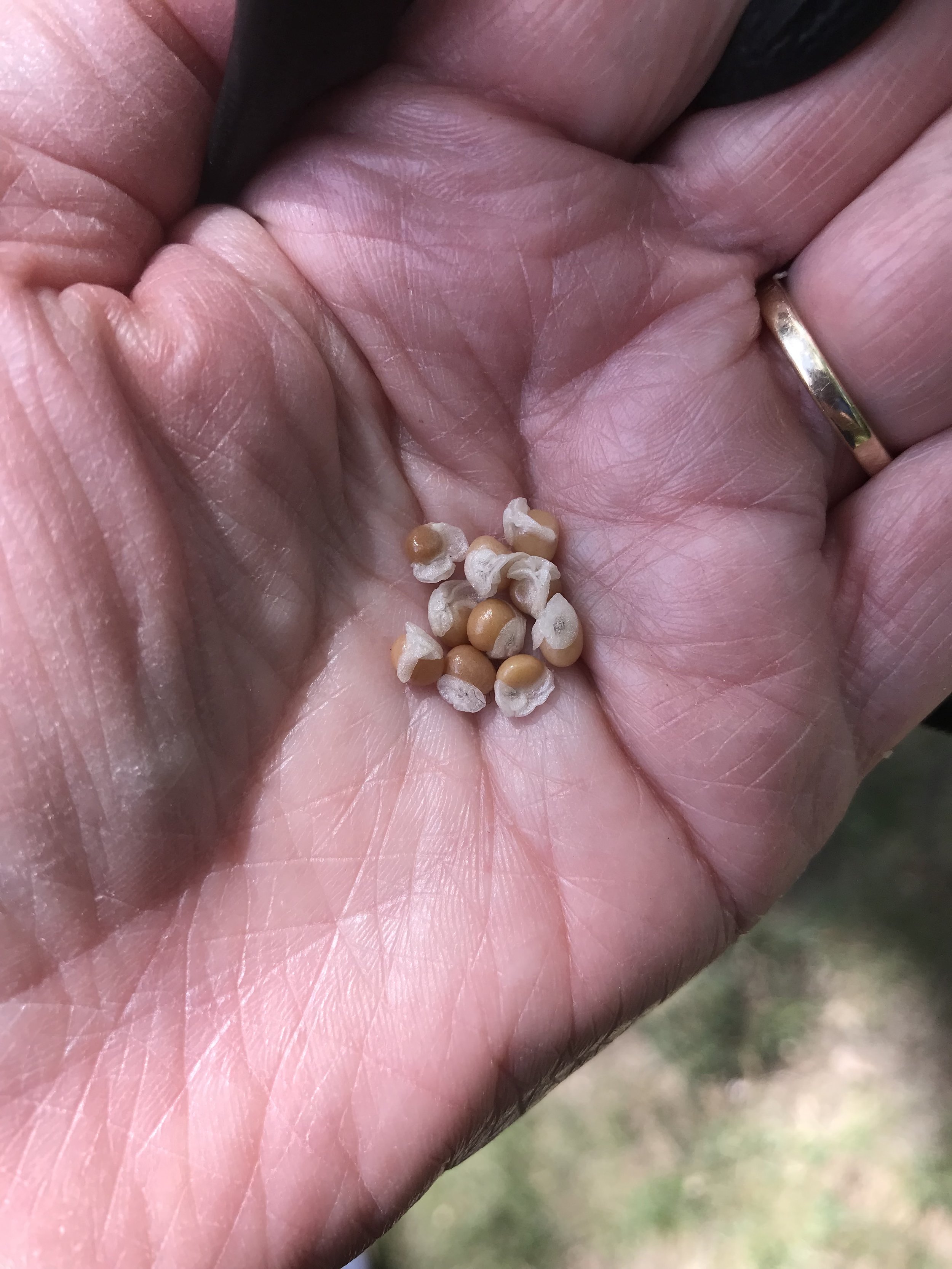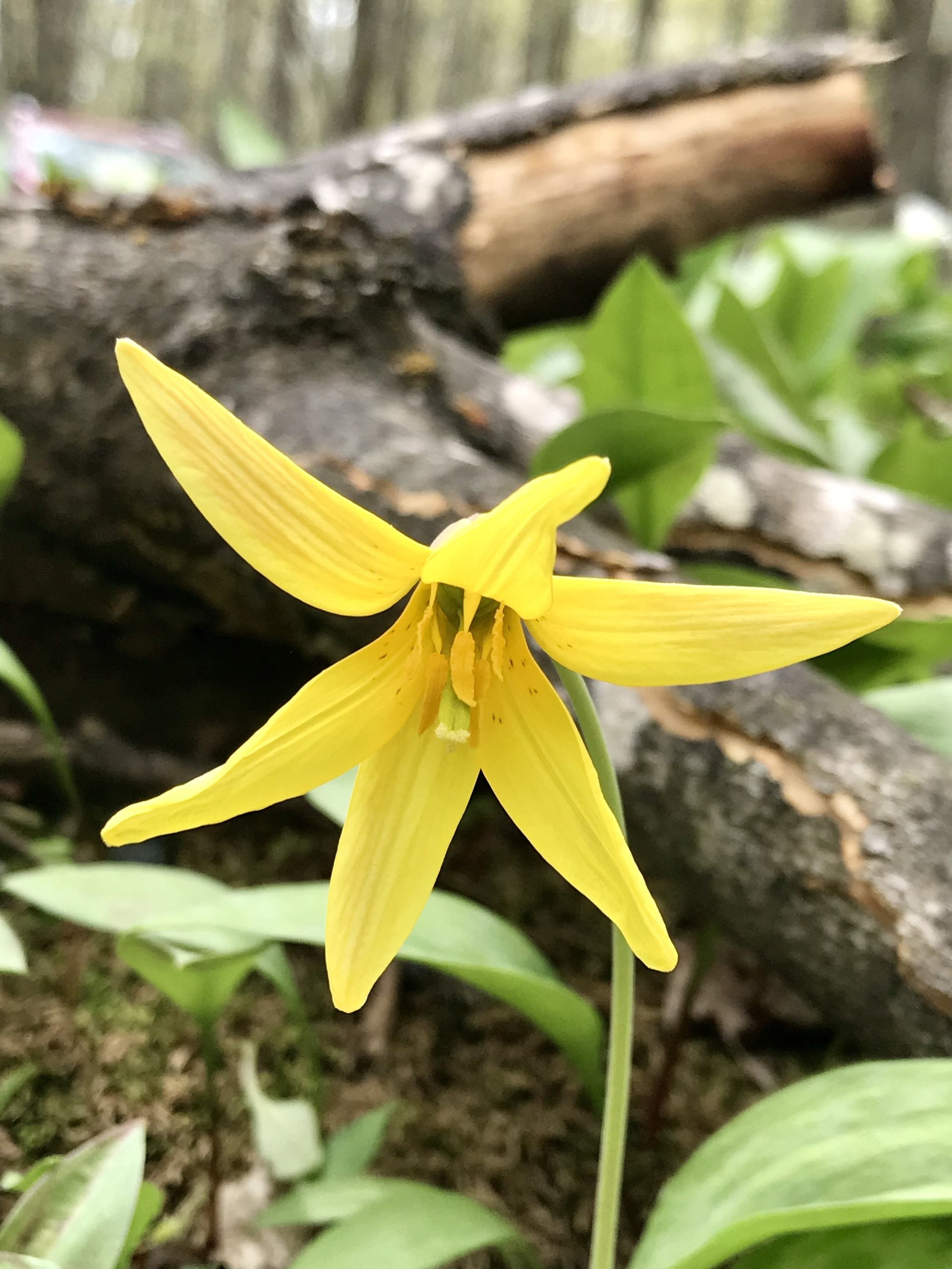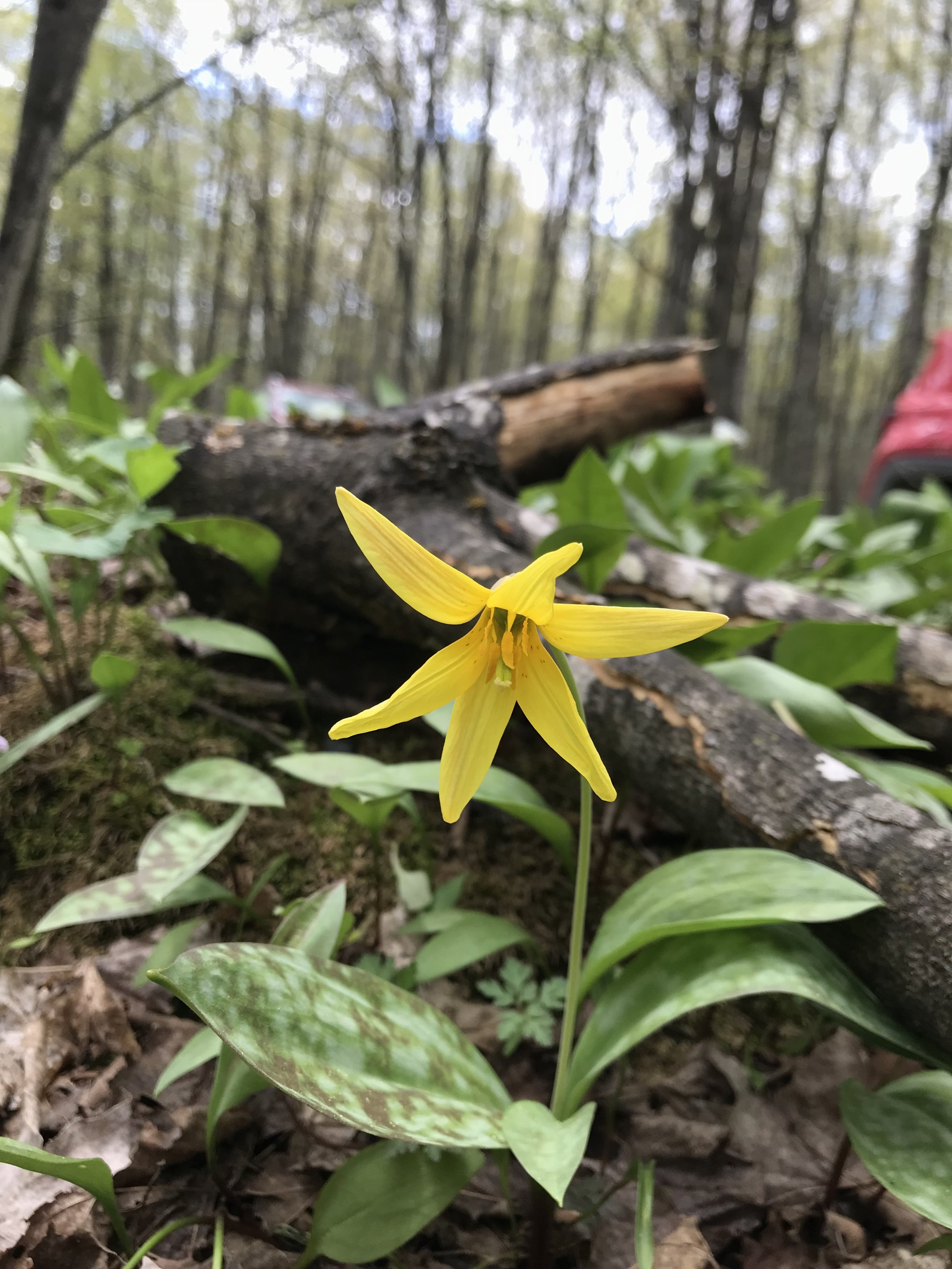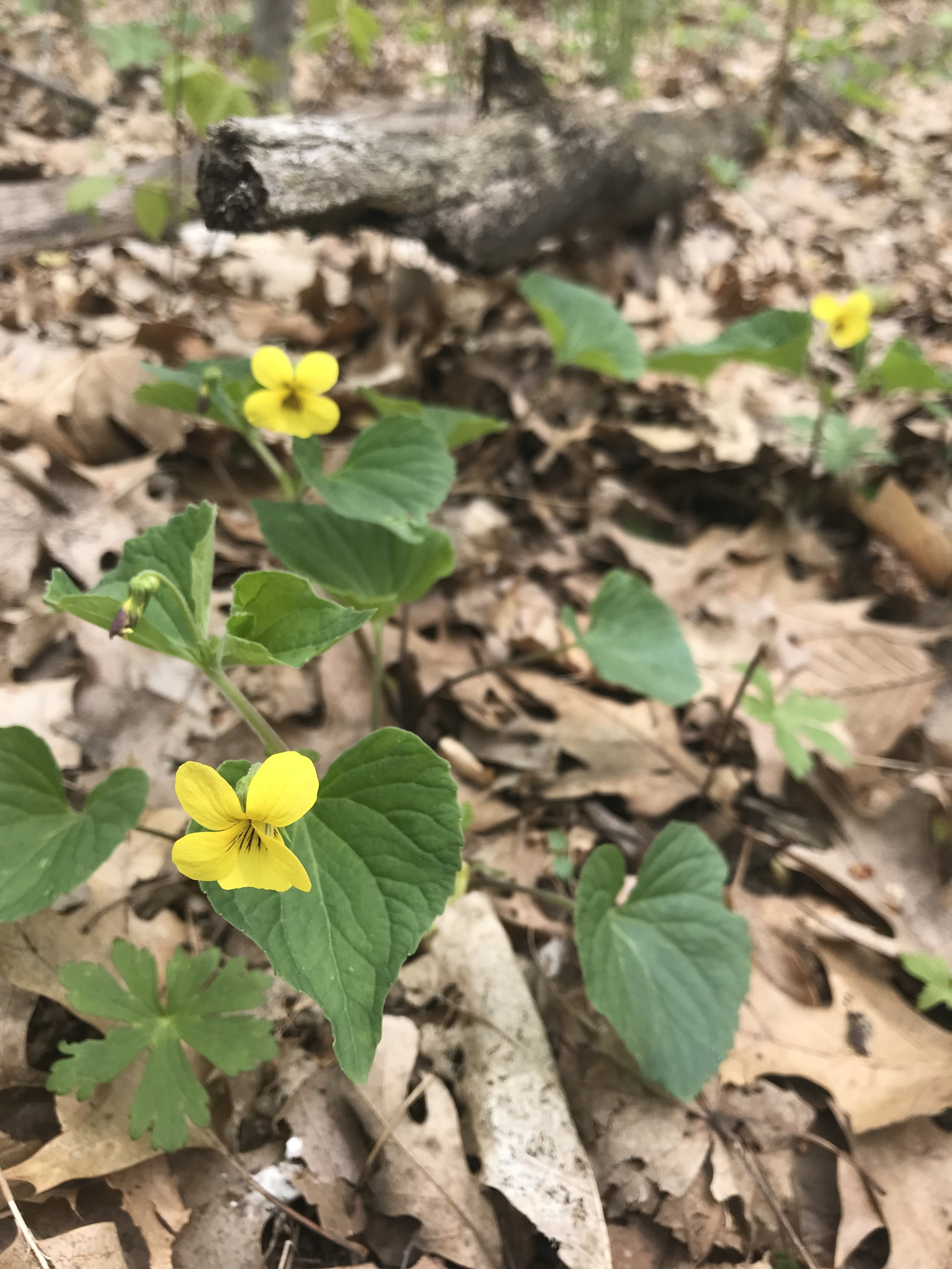 Image 1 of 8
Image 1 of 8

 Image 2 of 8
Image 2 of 8

 Image 3 of 8
Image 3 of 8

 Image 4 of 8
Image 4 of 8

 Image 5 of 8
Image 5 of 8

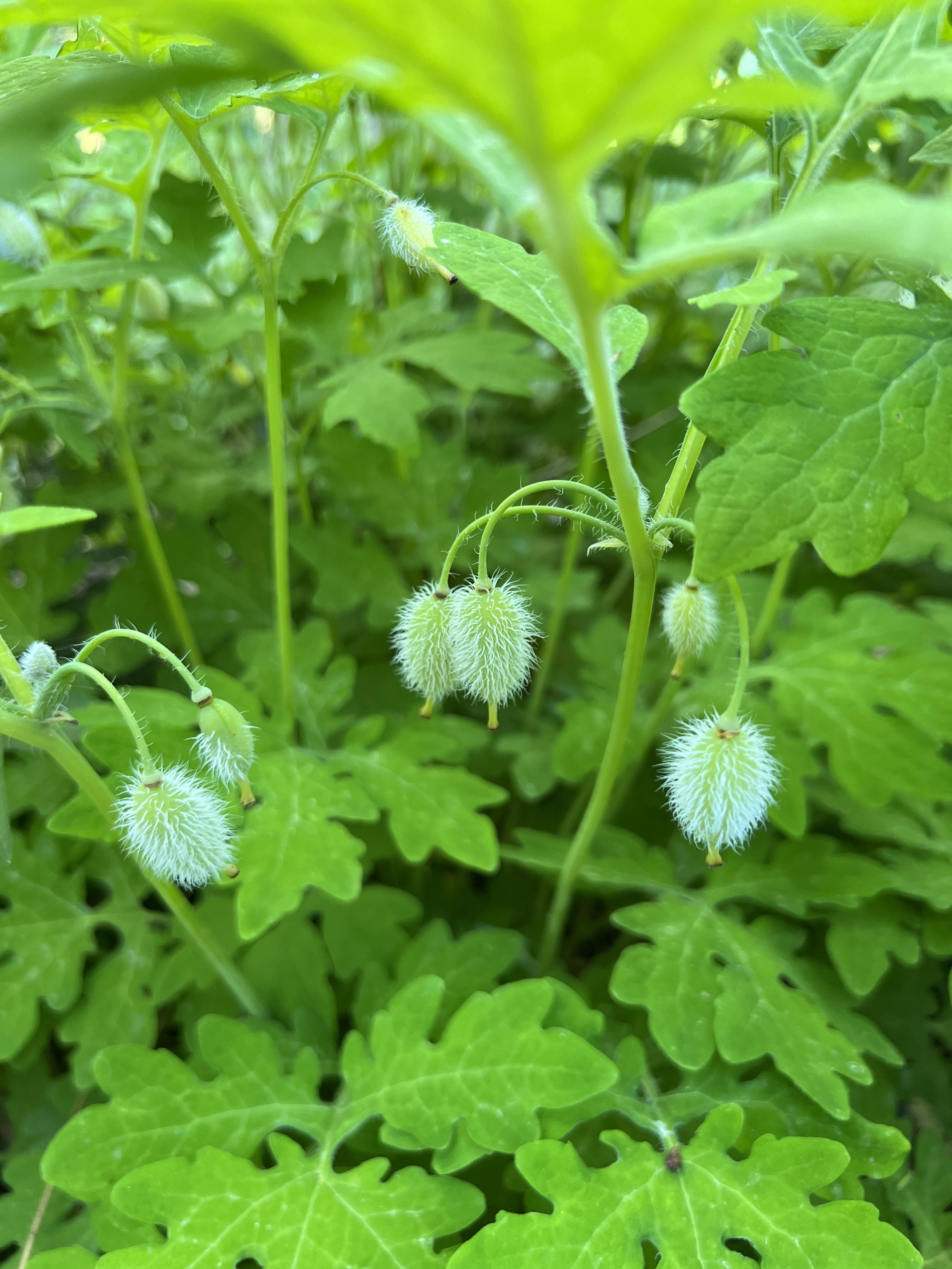 Image 6 of 8
Image 6 of 8

 Image 7 of 8
Image 7 of 8

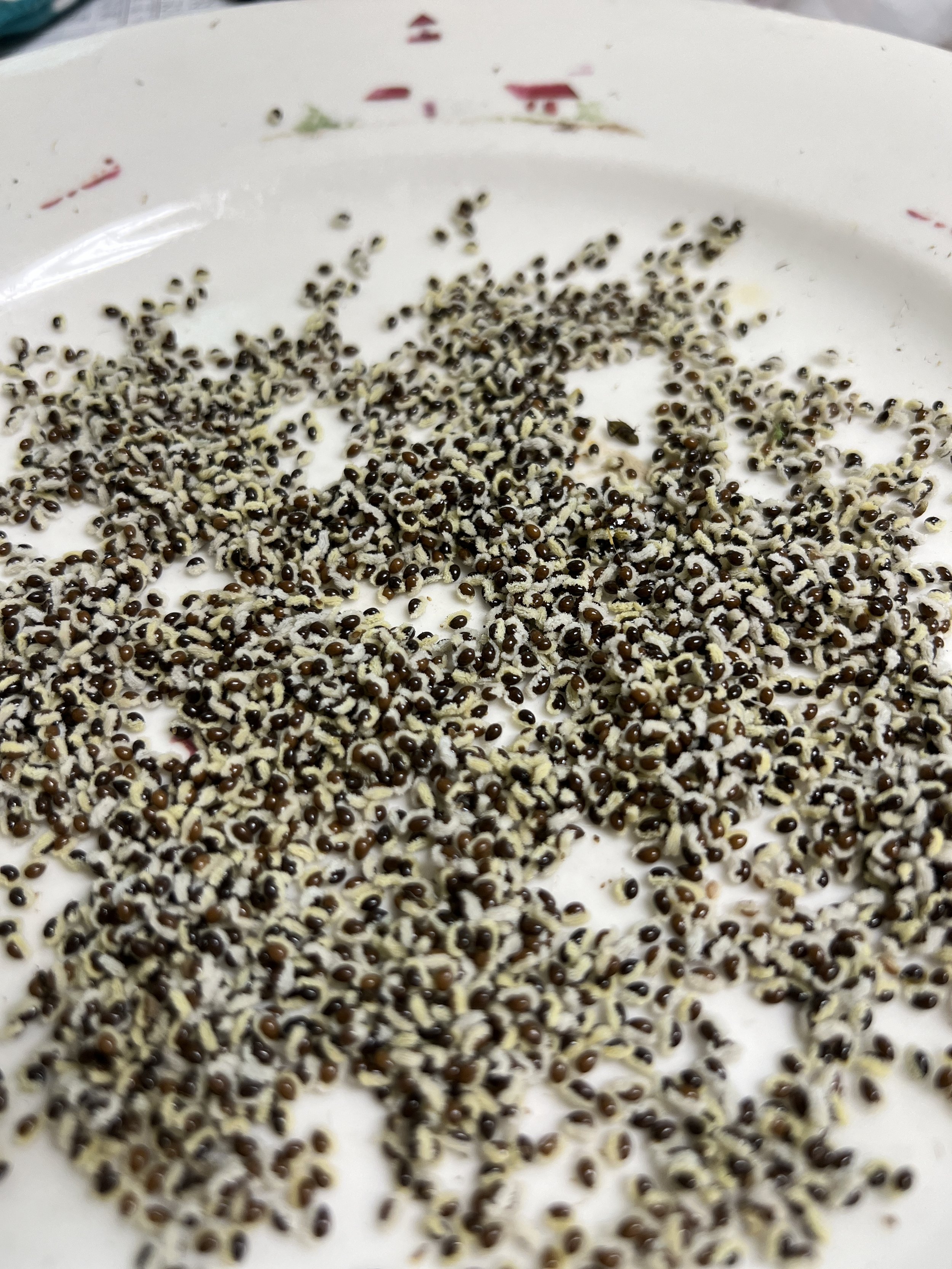 Image 8 of 8
Image 8 of 8









Wood Poppy, Celandine Poppy (Stylophorum diphyllum)
Wood Poppy, also known as Celandine Poppy, gives a pop of yellow in the woodland garden with its large yellow flowers. The flowers are a striking yellow with four round-oval petals and a deeper yellow center. The lobed, fuzzy foliage is also unusual, providing a textural difference from other plants. The foliage is a bit like Sensitive Fern. Seed pods look a lot like the unopened bloom, oval shaped and covered in white hairs, they explode when mature. The mature plant is mound shaped.
This plant should not be confused with lesser celandine which is a horrible invasive in our floodplain forests. Lesser celandine is a low growing ground cover plant. Another look-alike is greater celandine which has similar stature and similar lobed leaves to wood poppy, but the flowers are smaller and less stunning. The seed pods are long compared to wood poppy’s large oval, hairy pods.
This plant may bloom, go to seed, and stick around, but it may also die back after flowering if the ground becomes dry. If they are kept moist, the foliage will survive until the frost, sometimes giving a few blooms in the fall.
Ants carry some of the seeds away because of the attached eliasomes, so you may see these plants popping up around the garden as well as under the mother plant. Seeds may be eaten by rodents.
Wood poppy can grow in the sun if it has the required moisture. If stems or seed pods are broken, there is a yellow-orange fluid that seeps out. This fluid was used as a dye by Native Americans.
Wood Poppy (Stylophorum diphyllum)
Michigan Flora reference page for state distribution: Wood Poppy
height: 12-18 inches
bloom time: April-May
soil: medium, rich
sun: partial to shady, full sun if kept moist
plant spacing: 12”
flower: yellow
life cycle: perennial
family: Papaveraceae
Wood Poppy, also known as Celandine Poppy, gives a pop of yellow in the woodland garden with its large yellow flowers. The flowers are a striking yellow with four round-oval petals and a deeper yellow center. The lobed, fuzzy foliage is also unusual, providing a textural difference from other plants. The foliage is a bit like Sensitive Fern. Seed pods look a lot like the unopened bloom, oval shaped and covered in white hairs, they explode when mature. The mature plant is mound shaped.
This plant should not be confused with lesser celandine which is a horrible invasive in our floodplain forests. Lesser celandine is a low growing ground cover plant. Another look-alike is greater celandine which has similar stature and similar lobed leaves to wood poppy, but the flowers are smaller and less stunning. The seed pods are long compared to wood poppy’s large oval, hairy pods.
This plant may bloom, go to seed, and stick around, but it may also die back after flowering if the ground becomes dry. If they are kept moist, the foliage will survive until the frost, sometimes giving a few blooms in the fall.
Ants carry some of the seeds away because of the attached eliasomes, so you may see these plants popping up around the garden as well as under the mother plant. Seeds may be eaten by rodents.
Wood poppy can grow in the sun if it has the required moisture. If stems or seed pods are broken, there is a yellow-orange fluid that seeps out. This fluid was used as a dye by Native Americans.
Wood Poppy (Stylophorum diphyllum)
Michigan Flora reference page for state distribution: Wood Poppy
height: 12-18 inches
bloom time: April-May
soil: medium, rich
sun: partial to shady, full sun if kept moist
plant spacing: 12”
flower: yellow
life cycle: perennial
family: Papaveraceae
Wood Poppy, also known as Celandine Poppy, gives a pop of yellow in the woodland garden with its large yellow flowers. The flowers are a striking yellow with four round-oval petals and a deeper yellow center. The lobed, fuzzy foliage is also unusual, providing a textural difference from other plants. The foliage is a bit like Sensitive Fern. Seed pods look a lot like the unopened bloom, oval shaped and covered in white hairs, they explode when mature. The mature plant is mound shaped.
This plant should not be confused with lesser celandine which is a horrible invasive in our floodplain forests. Lesser celandine is a low growing ground cover plant. Another look-alike is greater celandine which has similar stature and similar lobed leaves to wood poppy, but the flowers are smaller and less stunning. The seed pods are long compared to wood poppy’s large oval, hairy pods.
This plant may bloom, go to seed, and stick around, but it may also die back after flowering if the ground becomes dry. If they are kept moist, the foliage will survive until the frost, sometimes giving a few blooms in the fall.
Ants carry some of the seeds away because of the attached eliasomes, so you may see these plants popping up around the garden as well as under the mother plant. Seeds may be eaten by rodents.
Wood poppy can grow in the sun if it has the required moisture. If stems or seed pods are broken, there is a yellow-orange fluid that seeps out. This fluid was used as a dye by Native Americans.
Wood Poppy (Stylophorum diphyllum)
Michigan Flora reference page for state distribution: Wood Poppy
height: 12-18 inches
bloom time: April-May
soil: medium, rich
sun: partial to shady, full sun if kept moist
plant spacing: 12”
flower: yellow
life cycle: perennial
family: Papaveraceae
